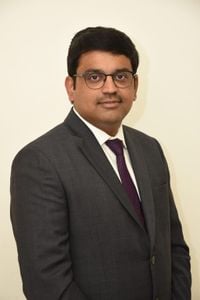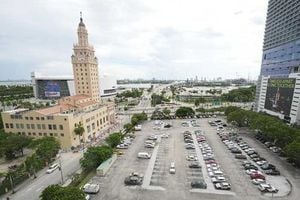Bill Miller never imagined that a dinner out would turn into a life-or-death ordeal. The 62-year-old Pearl River, New York resident, who had already been diagnosed with heart failure three years prior, found himself knocked out of his chair by a jolt from his internal defibrillator. That evening, the device fired an astonishing 22 times in rapid succession, each shock meant to correct the dangerous rhythm of his faltering heart. The pain was so intense that Miller began screaming, desperate for someone to turn the defibrillator off. "The defibrillator saved my life.… It was a wake-up call," Miller told AARP in a story published September 30, 2025.
His ordeal is not unique. According to the Journal of the American Heart Association, heart failure is a growing concern in the United States. An estimated 6.7 million Americans are living with heart failure, and the condition contributes to about 425,000 deaths annually. While deaths from heart attacks have dropped in recent decades—thanks to medical advances and a decline in smoking rates—heart failure mortality has climbed a staggering 146 percent from 1970 to 2022. One in four Americans will develop heart failure in their lifetime, and up to 40 percent of those who survive heart attacks will go on to develop this chronic, often debilitating condition.
Miller’s story is a cautionary tale about the importance of heeding medical advice and taking proactive steps to manage one’s health. Despite faithfully taking his prescribed medications, Miller admits he ignored his doctors’ warnings, continuing to work long, stressful hours in banking. The early signs of trouble—a persistent cough and fatigue—were easy to dismiss. Miller attributed them to chronic sleep apnea and the grind of daily life. But when he finally saw a cardiologist, the diagnosis was clear: his heart was pumping out only a fraction of the blood his body needed.
After months on medication, Miller’s doctor recommended an implantable defibrillator to protect him from sudden cardiac arrest. For a while, Miller almost forgot about the device in his chest. "To be perfectly honest," Miller confessed to AARP, "I was not taking it seriously enough.… You’ve got to pay attention to your doctors and pay attention to your health and what you’re eating, and I didn’t." That fateful night in the restaurant changed everything. The trauma of the experience left Miller with post-traumatic stress disorder, but it also fueled a dramatic turnaround. Over the next 18 months, he shed 87 pounds from a starting weight of 283 pounds and sought treatment for his PTSD. "I got into the best physical condition of my life," he said, determined to never take his health for granted again.
Across the globe, in Bangalore, a different but equally inspiring story of survival unfolded. As reported by APN News on October 1, 2025, a 63-year-old man from Madanapalle faced the grim reality of end-stage heart failure after a massive heart attack. Once active and healthy, his world shrank to the confines of a hospital room, dependent on continuous intravenous milrinone therapy at home to keep his heart beating. His prospects were bleak—without a transplant, doctors estimated he had little chance of surviving beyond a year.
Then, in a twist of fate, a matching donor heart became available. The donor, also from Madanapalle, was declared brain dead following an intracranial bleed. The medical team sprang into action, orchestrating a complex transplant operation that required two operating theatres working in tandem—one to harvest the donor heart, the other to prepare the recipient. Thanks to the proximity of both patient and donor, the critical Cold Ischemia Time (the period the heart is preserved on ice before implantation) was kept to a minimum.
The surgery was only the beginning. The first five days after the transplant were crucial, as doctors vigilantly monitored for signs of rejection and infection—risks heightened by the immunosuppressant drugs necessary to prevent the body from attacking the new heart. The patient faced initial rejection episodes, but prompt intervention and ongoing biopsies confirmed the new heart was being accepted. By the time of discharge, the man was walking independently, ready to embrace a new chapter of life.
Dr. Naveen Chandra G S, Head of Interventional Cardiology at Aster Whitefield, reflected on the significance of this case: "This transplant was unique, not only because of the medical complexity but also because of the extraordinary coincidence of both donor and recipient being from the same hometown. It is a powerful reminder of how organ donation can transform lives." His colleague, Dr. Chirag, echoed the sentiment, emphasizing that "careful planning, advanced technology, and teamwork can turn a high-risk surgery into a success story. It also underlines the importance of timely referrals to transplant programs, which can make the difference between life and death for patients with advanced heart failure."
The Bangalore case also highlights the growing sophistication of India’s transplant programs, which now rival those of top global centers. Doctors there are optimistic about the role of emerging technologies—artificial intelligence, robotics, and virtual monitoring—in further improving outcomes for heart transplant patients. But they are quick to stress that prevention remains the best medicine. Managing risk factors like hypertension, diabetes, and high cholesterol, and recognizing early symptoms such as breathlessness and swelling, can help stave off the progression to advanced heart failure.
Both Miller’s and the Madanapalle patient’s stories underscore the devastating toll heart failure can take, but also the hope that comes with medical innovation, personal resilience, and, in some cases, the generosity of organ donors. As heart failure rates continue to rise, these stories serve as urgent reminders: pay attention to your body, listen to your doctors, and don’t underestimate the power of lifestyle changes. And for those who reach the edge, advances in medical care and the selflessness of donors can quite literally offer a second chance at life.
For now, Miller continues to live each day with a renewed sense of purpose, while the man in Bangalore walks forward with a new heart—and a new lease on life. Their journeys are powerful testaments to the fragility of health, the strength of the human spirit, and the lifesaving impact of modern medicine and organ donation.




